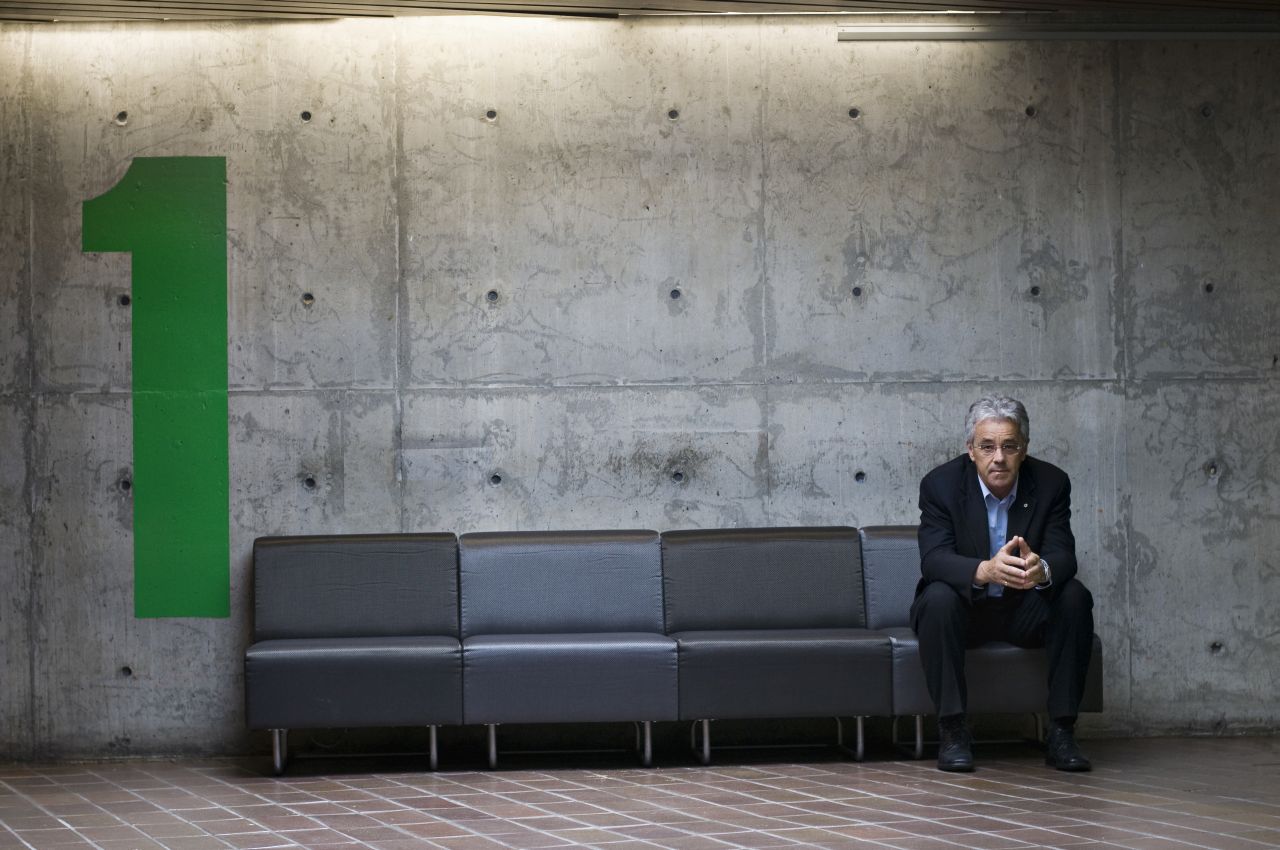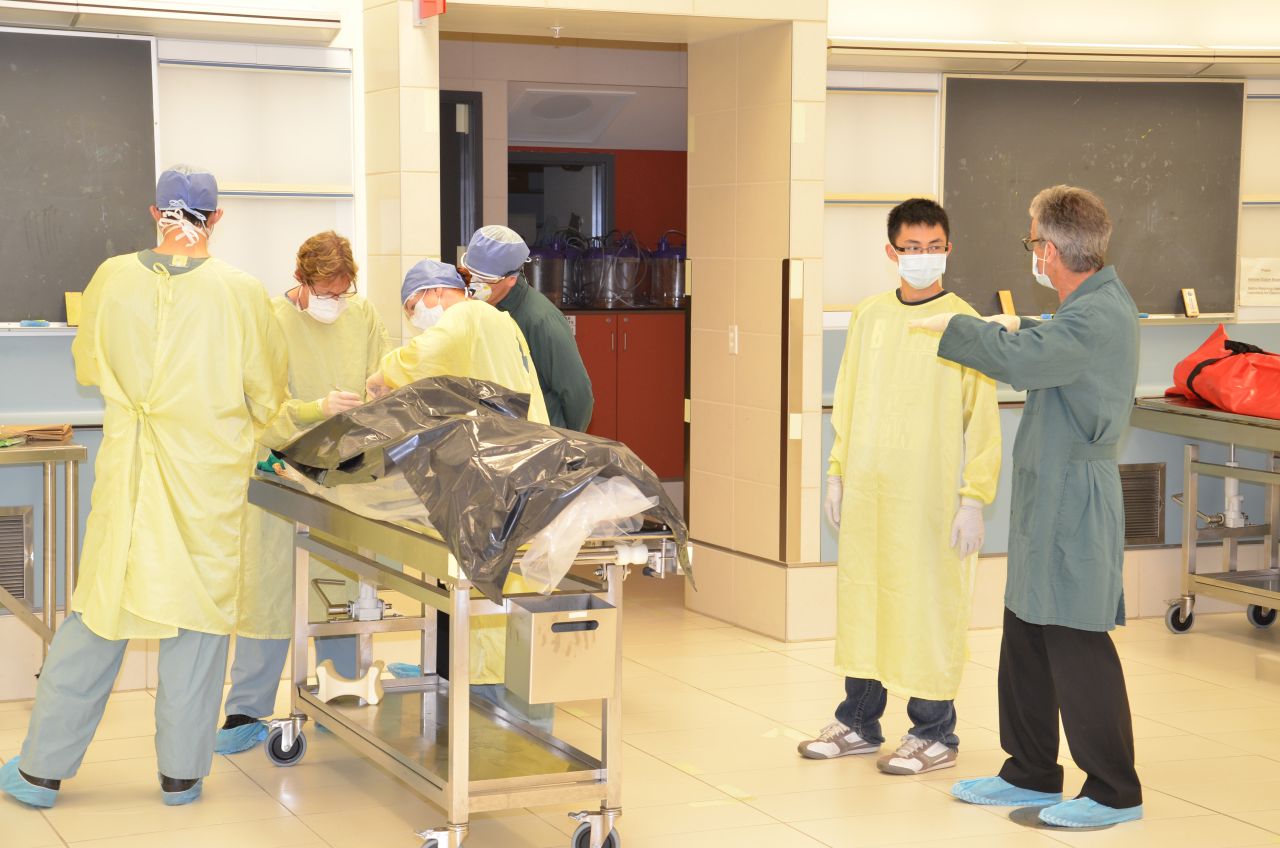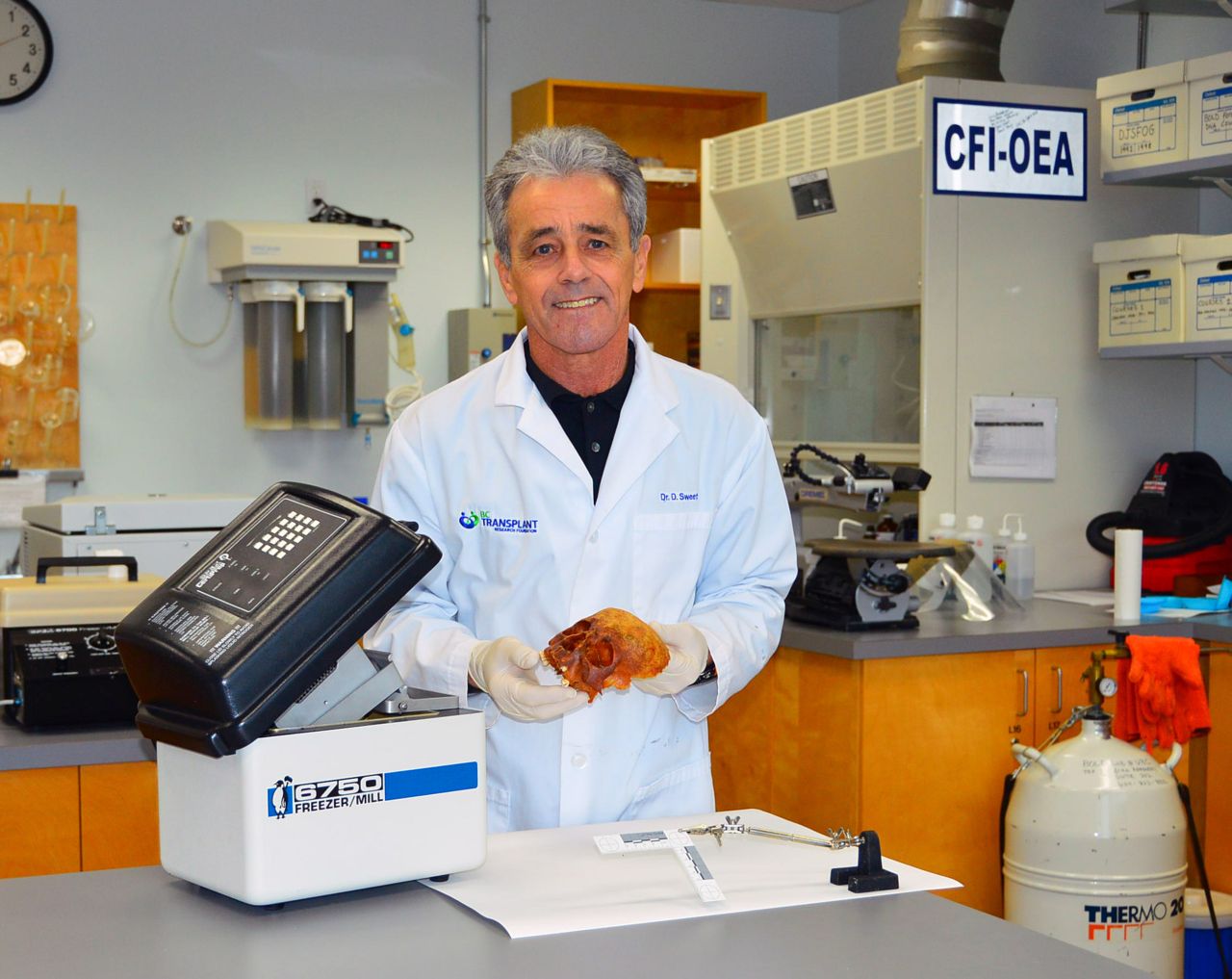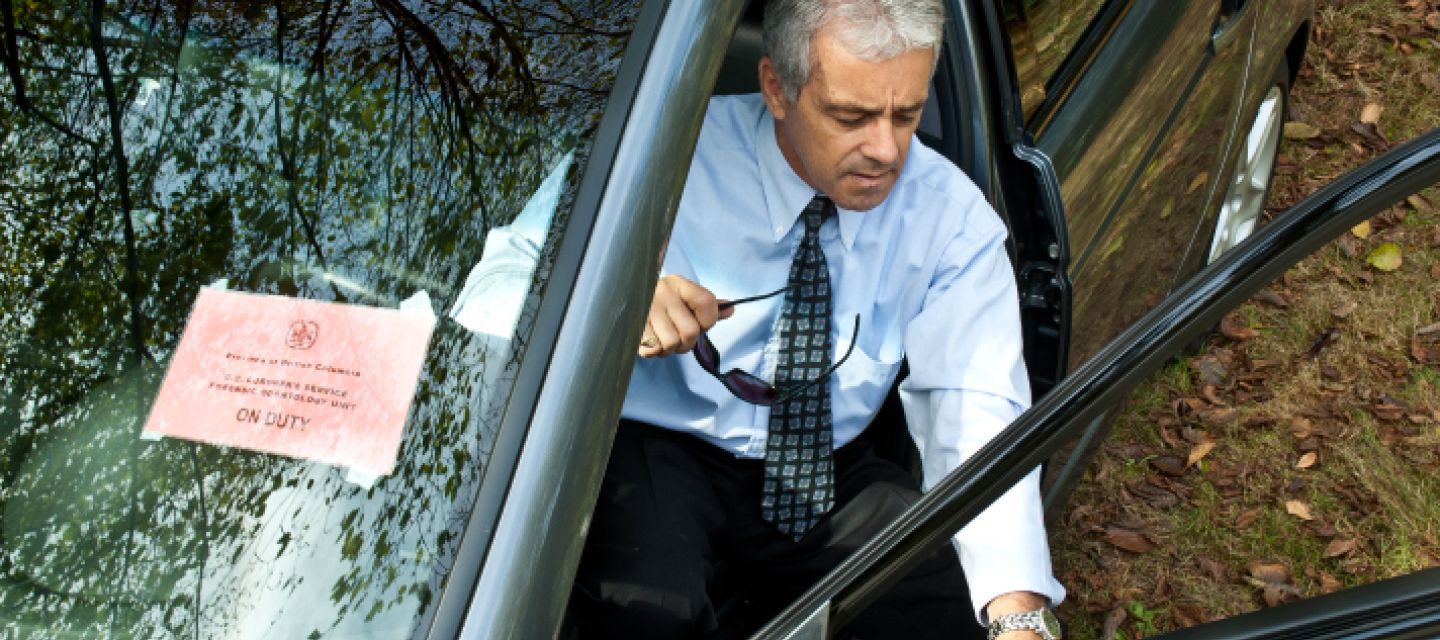Top forensic dentist Dr. David Sweet, OC, is all too familiar with the tragic aftermaths of violent crimes and natural disasters. And, more than once, he has been forced to confront his own mortality. Yet this gifted and compassionate scientist is as positive as they come.
It’s well after midnight when a young waitress steps off the bus and walks toward her apartment. Behind her, unheard and unseen, a man emerges from the shadows. Clamping a powerful hand over her mouth, he grabs the woman and forces her at gunpoint into his car. Then he drives to a secluded area on the outskirts of town where he viciously assaults her and dumps her body in the slow‑running waters of a nearby creek. A few hours later, an early‑morning jogger spies the woman’s body submerged in shallow water near the edge of the creek.
The police find a phone and a shoe that they suspect belong to the victim, but she has been beaten beyond recognition. They need to confirm her identity so they can trace her last hours and get on the killer’s trail before it grows cold. The killer has also provided a vital clue: when attacking the woman, he bit her left shoulder so hard that the pattern of his teeth is branded in her flesh.
Who do they call to positively identify the body and analyze the bite mark? A forensic odontologist.
UBC associate dean and professor of dentistry, Dr. David Sweet, DMD’78, has been on the receiving end of such calls countless times. Since he became an odontologist (sometimes known as “forensic dentist”), he has been involved in more than 1000 real‑life CSI cases and has seen evidence of the most depraved things human beings can do to one another.
Sweet got his first taste of forensic dentistry in the late 1970s when he ran a general practice in Cranbrook, BC, his hometown. A police officer called regarding a fatality in which a car had gone off the road and burst into flames. From the license plate, they knew who owned the car; he was one of Dr. Sweet’s patients. Would Sweet mind bringing in that person’s dental chart to see if he could positively identify the body?
A gruesome scene greeted him at the morgue, one that his dentistry courses had not prepared him for. But when the pathologist pulled back the charred lips, the teeth were white as paper and perfectly intact. Teeth are the hardest substance in the human body and protected by enamel, making them resistant to fire. Sweet had done a crown for the man not long before. “You have a creativity that you do fillings with,” he explains. “You put supplemental anatomy in if you’re really good at carving; when you do a restoration you shape teeth exactly the way they look when they’re normal. I do all that. And I knew this was my patient.” There’s excitement in his voice as he tells the story – it’s the passion of one who has found his calling in life.
When the pathologist pulled back the charred lips, the teeth were white as paper and perfectly intact. Teeth are the hardest substance in the human body and protected by enamel, making them resistant to fire.
A trim, handsome man with a warm smile and silver‑gray hair, Sweet’s positive energy is contagious and he looks the picture of health. But looks don’t tell the whole story.
At age 10, he was diagnosed as an insulin‑dependent diabetic. In those days it was not easy to maintain healthy blood‑sugar levels, and Sweet says that after decades of insulin injections most people with diabetes would develop challenging complications. But he took “a scientific approach” to his illness right from the get‑go, which enabled him to carry on a full and active life while balancing on the insulin tightrope behind the scenes.

He grew up around horses, haying and branding and riding in rodeos. He taught himself to ski, played a mean game of hockey and baseball, and went hunting in the fall and ice‑fishing in winter. In school, he won sports and academic awards, all the while holding down various jobs at school and around town. He even won a photography contest with Canadian Living Magazine and, in his graduating year, was elected prime minister of his school.
His younger sister, Diane, says her brother always had a strong work ethic. “We were brought up that way, to do things well,” she says. “And when bad things happened, you didn’t wallow in it; you dealt with them and you carried on. That’s Dave’s conviction, that’s his inner strength, and he never let the diabetes get the best of him. He tried to stay in control of it rather than letting it take over, controlling him.”
In 1982, biosynthetic human insulin was introduced, largely replacing the beef‑ and pork‑based types of insulin that, until then, were prevalent. Over time, it emerged that a significant percentage of people who use human insulin don’t get symptoms, such as sweating and tremors, to warn them when they’re becoming hypoglycemic. Sweet was one of these people. Before long, his kidneys began to fail. He would soon have to go on dialysis, the doctors said, and then he’d need a new kidney.
So in 1984 he sold his thriving practice and moved to Vancouver to be close to his physicians. His reputation as an outstanding dentist preceded him, and he was promptly invited to teach in UBC’s Faculty of Dentistry. “I felt like I’d fallen into a big hole and come out smelling really good,” he says.
Within a couple of years, he won a UBC Dentistry teaching award. Despite this achievement, he was informed that if he hoped to get tenure he’d have to specialize, develop a research portfolio, and build a lab. “So they threw down this gauntlet in front of me,” he says, “but when I picked up the forensic odontology gauntlet they said, ‘Forensic what?!’”
Forensic odontologists devote a lot of time to helping identify victims and perpetrators of crime. As Sweet describes it, when a person has been “erased and thrown away” by a killer, his team’s main goal is to help repatriate that person to their family. They do this by confirming the victim’s identity through dental comparisons and bite‑mark and DNA analysis, and by sharing their insights as to how the victim met their death. Painful though this knowledge is, it helps give closure to those left behind.
Not everyone is cut out for such work. In addition to extraordinary patience, fine motor skills, precision, and accuracy, it demands a rare degree of resilience. Sweet has all of these, in spades.
He had been in third‑year sciences and on his way into medical school when John Anderson, a teaching assistant in Dr. David Suzuki’s genetics class, suggested he consider dentistry. “You’ve told me you like woodworking and you love building things with your hands, and you are very good in the lab with your manual skills,” Anderson said to him. “Dentistry is a medical profession too. And, here at UBC, you take medical courses for a couple of years before you really start treatment in dentistry. I think you’d thrive in something like that.”
To this day, Sweet is grateful for the encouragement Anderson gave him. “I love my work. The creativity, the art as well as the science – it’s just the perfect fit,” he says. “Forensic odontology is like trying to solve a jigsaw puzzle at the same time as reading a whodunit. The clues are coming in and there are different things going on, and you’re trying to physically match these things. It’s a really cool, complex, unusual exercise.”
Sweet has an in-born knack for recognizing patterns, an ability that is at the heart of forensic dentistry. Because bite injuries are found in eight out of 10 sexual assault cases and homicide cases that involve physical altercation, the ability to match a bite mark conclusively with a suspect’s dentition can significantly influence the court’s decision to free or convict the suspect.
Bite injuries are found in eight out of 10 sexual assault cases and homicide cases that involve physical altercation.
But what happens to a person after they’ve been immersed, day in and day out – for decades – in the investigation of heinous crimes? “It’s a very dark area, dealing with mutilated bodies and murders,” says Dr. Daniel Berant, a recent graduate of UBC’s dental school. He is amazed by Sweet’s “ability to see the horrors of tragedies, murders and natural catastrophes, and still get up each day and say, ‘Life is beautiful.’”
Sweet’s hobbies are a huge component of his coping strategy. Whether turning out the next project in his woodworking shop, or riding shotgun in a race car with a friend going full tilt around the track, or ziplining, which he likens to flying, or quietly skimming the waves on a friend’s sailboat, he’s having so much fun that it leaves no room in his mind for the bad stuff.
His deep respect for those who have died also keeps him grounded. “Do you walk softly when you carry the dead?” he asks, often, of colleagues and students. It’s more a statement than a question.
“It’s the code he lives by – being respectful of the person,” says colleague Dr. Dirk van der Meer, DMD’92. “Even though he has to approach them scientifically, which requires an unbiased, almost cold manner, there’s still the human element that he never forgets.”
Van der Meer regards him as both friend and mentor. “In forensics circles around the world, David Sweet is the ‘gold standard’ — he’s the person you go to for the final answer, and he always has it.”

Those who know Sweet were not surprised when, in 2008, he was awarded the Order of Canada to acknowledge the revolutionary forensic techniques he developed and his untiring service on behalf of victims of crime and mass disasters.
And, just a few months ago, he was awarded the Canadian Forces Medallion for Distinguished Service, the highest award the military can confer on civilians. For years, Sweet has provided training for Canadian military forensic dentists at his UBC lab, which the Armed Forces have selected as the “touchstone” of excellence for this country’s military dentists to emulate. He also provides Canada’s military forensic dentists with detailed advice, tailored to their specific mission, every time they deploy to the site of a mass disaster or armed conflict.
Sweet seems indomitable, even in the context of his own health. It was 1984 when doctors told him the day would soon come when he’d need a kidney transplant; he carried on for more than 16 years before that day arrived.

During those intervening years, he built UBC’s Bureau of Legal Dentistry lab (BOLD lab), which was tasked with education, research, and forensic dentistry cases; he worked on hundreds of murder cases; he invented a technique for getting DNA out of teeth, making BOLD the place of choice for police agencies across Canada to send teeth and bones for forensic analysis; he founded the British Columbia Forensic Odontology Response Team (BC‑FORT), a 90‑member core group of dentists, hygienists and certified dental assistants trained to respond effectively in the event of a mass disaster in Canada or internationally; and he earned a PhD (cum laude) in forensic medicine from the University of Granada, Spain, where he invented a method that enhances DNA recovery from scant traces of saliva left on skin near bite wounds.
When, at last, Sweet went on the waiting list for a kidney, a young general surgeon approached him. The surgeon said he had recently learned how to transplant a pancreas and wanted Sweet to get a new one along with a new kidney.
“You can’t kid me,” Sweet retorted. “I’ve dissected a body in medical/dental school, and I know what a pancreas is like – it’s like snot. It doesn’t have a cortex. You can’t tease a duct and a vein and an artery out of a pancreas. You can’t transplant it!”
“You leave that to me,” the surgeon replied.
So it was that, on June 25, 2001, the family of a young accident victim generously enabled Sweet to receive the new kidney he so desperately needed, together with a new pancreas, “and a switch was flipped.” No longer diabetic, to this day his blood tests are perfect. A couple of years later, the new kidney became irreparably diseased, so a forensics colleague – so close a match it was like they were brothers – gave him one more lease on life. “His name is John King, and John is a king, and then some.”
Sweet had barely recovered from his second kidney transplant when he was asked to head up the Canadian forensic dentists’ response to the 2004 tsunami in Thailand. He served in this capacity for 239 consecutive days and so impressed other scientists at INTERPOL that they elected him chief scientist in INTERPOL’s Disaster Victim Identification section, a position he held until a new illness forced him to step down.
Although Sweet was cured of diabetes and his new kidney stayed healthy, life had even fiercer blows to deal him. In 2011, he was diagnosed with cancer. With typical unflinching courage, he submitted to surgery and chemotherapy and recovered. But one year later, to the day, his oncologist phoned with bad news: it appeared the cancer was back. This time it was inoperable. The diagnosis? Recurrent metastatic adenocarcinoma. Sweet would be dead within six months.
But Sweet was not about to give up. For five weeks, with his wholehearted encouragement, doctors dialed up the “chemical warfare” to the maximum possible dosage. Then, for five more weeks, they bombarded him with an extremely high level of radiation, administered almost daily.
“He had such an upbeat, positive attitude the whole time,” says van der Meer, “and this steel determination to beat the disease.”
After the onslaught on his body, there was nothing to be done but wait for an interminable three months until his tissues could recover sufficiently for a follow‑up scan. It was time for the bucket list. He went ziplining and snorkeling with his wife, and he got strong.
“I have a very deep belief,” Sweet says, “that the power of the mind and the power of positive thinking can overcome things by setting up the body and the personality for success.” He shares a personal story to illustrate the point:
“I was in a cove in Hawaii with my wife, Chris. We were snorkeling, looking at giant green sea turtles. I was watching a female turtle that was lying on the bottom. She decided to come up. I guess she was going to take a breath of air, but when she saw me swimming above her she came up and looked at me really close, right into my eyes. I had to swim backwards so as not to touch her. Then she popped up and had a breath and looked around. And then I went up, too.”
A Polynesian man on shore asked Sweet what he had seen. Hearing the story, he exclaimed, “That’s incredible!” and added, “In our faith, the sea turtle means two things: peacefulness, and longevity.”
Sweet clung to this as a sign that he was going to be okay. “I hadn’t had my PET scan yet,” he says, knocking loudly on the wooden table he’s seated at.
A few weeks after their snorkeling adventure, he and his wife were sitting in the oncologist’s office, reading the pathology report. “I had to refer back to the original scans to confirm the size and location of the tumour,” the pathologist had written, “because nothing is visible on the current scan. Completely resolved.”
Dr. David Sweet had fallen down yet another deep hole and come out smelling great.
